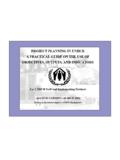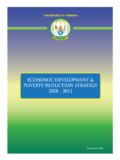Transcription of GOAL TRAINING WORKBOOK version 4 11th July 2013
1 Authors: Helen Badge, Maria Weekes, Belinda Jones, Barbara Strettles Goal TRAINING Participant WORKBOOK The Goal TRAINING Project is jointly funded by the Lifetime Care and Support Authority, the Motor Accidents Authority and WorkCover NSW, of the NSW Government s Safety, Return to Work and Support Division. NSW Agency for Clinical Innovation 2013 Goal TRAINING Workshop Resources available from: AGENCY FOR CLINICAL INNOVATION Level 4, Sage Building 67 Albert Avenue Chatswood NSW 2067 Agency for Clinical Innovation PO Box 699 Chatswood NSW 2057 T +61 2 9464 4666 | F +61 2 9464 4728 E | Produced by: Brain Injury Rehabilitation Directorate Agency for Clinical Innovation Level 2, 1 Campbell St Liverpool BIRRG, Ingham Institute of Applied Medical Research Tel 02 8738 9263 | Fax 02 9602 7187 First edition: 7 February 2013 version 2: 28 February 2013 version 3: 30 April 2013 version 4: 11 July 2013 SHPN: (ACI) 130011 ISBN: 978-1-74187-806-6 Disclaimer: Content within this publication was accurate at the time of publication.
2 This work is copyright. It may be reproduced in whole or part for study or TRAINING purposes subject to the inclusion of an acknowledgment of the source. It may not be reproduced for commercial usage or sale. Reproduction for purposes other than those indicated above, requires written permission from the Agency for Clinical Innovation. Agency for Clinical Innovation 2013 NSW Agency for Clinical Innovation 2013 Goal TRAINING Workshop Resources available from: i TABLE OF CONTENTS 1. INTRODUCTION 1 TRAINING Objectives 2 TRAINING Structure 2 2. DEFINITIONS 4 3. THE ROLE OF GOAL SETTING IN REHABILITATION 7 Benefits of Goal Setting on Client Participation 7 Activity 1. 9 Benefits of Goal Setting for Planning within Team Context 11 Team Collaboration 12 Measuring Goal Achievement to Inform Clinical Planning 14 Benefits of Goal Setting for Funding 16 Revision Exercise 1 18 4. FACTORS THAT INFLUENCE GOAL SETTING IN REHABILITATION 19 Client Factors that Influence Goal Setting in Rehabilitation 19 Client centred Goal Setting 19 Client Factors that Influence Client Engagement in Goal Setting 20 Continuum of Client Engagement in Goal Setting 23 Levels of Client goals 26 The International Classification of Functioning, Disability and Health (ICF) 26 Levels of Rehabilitation goals Using ICF Framework 27 Activity 2 31 Approaches to Rehabilitation that Influence Goal Setting 33 Revision Exercise 2 37 5.
3 ASSESSING THE QUALITY OF REHABILITATION CLIENT goals 38 SMARTAAR Goal Process 38 Elements of High Quality SMARTAAR goals 40 Elements of SMART goals 40 Activity 3 45 The AAR Elements of the SMARTAAR Goal Process 47 Additional Criteria for High Quality goals 50 6. THE SMARTAAR GOAL WORKSHEET 53 Scope and Limitations of the SMARTAAR Goal Worksheet 54 What type of goals can I use it for? 55 How SMART does a goal need to be? 55 How long will I need to use it? 56 How to Use the SMARTAAR Goal Worksheet 58 Using the SMARTAAR Goal Worksheet: Instructions for CLINICIANS 59 Using the SMARTAAR Goal Worksheet: Instructions for FUNDERS and CLINICAL MANAGERS 60 PRACTICAL ACTIVITY 1 65 NSW Agency for Clinical Innovation 2013 Goal TRAINING Workshop Resources available from: ii Instructions 65 SMARTAAR WORKSHEET for PRACTICAL ACTIVITY 1 66 PRACTICAL ACTIVITY 2 67 Instructions 67 SMARTAAR GOAL WORKSHEET PRACTICAL ACTIVITY 2 68 7.
4 PUTTING IT ALL TOGETHER 69 Structuring Rehabilitation Plans 69 Client generated and Client focused goals in Rehabilitation Plans 70 Template for Rehabilitation Plan Reporting 73 Elements of the Rehab Plan Template 74 Instructions for Using Template 76 PRACTICAL ACTIVITY 3 82 Instructions 82 Case study 82 Worksheets for PRACTICAL ACTIVITY 3 83 Practical Activity 4 85 Instructions 85 Developing Team Processes to Facilitate High Quality Goal Setting 87 Goal Setting Processes within Rehabilitation Units / Teams 87 Goal Setting Processes for Single Discipline / Sole Workers 90 Summary: Developing Team Processes to Facilitate High Quality Goal Setting 92 8. WORKBOOK SUMMARY 93 9. REFERENCES 94 APPENDIX A: ACI BRAIN INJURY REHABILITATION DIRECTORATE (BIRD) STATE-WIDE GOAL GROUP MEMBERS* 97 APPENDIX B: PROJECT STEERING COMMITTEE MEMBERS 98 APPENDIX C: PROJECT MANAGEMENT TEAM 99 NSW Agency for Clinical Innovation 2013 Goal TRAINING Workshop Resources available from: iii List of Tables Table 1 Factors affecting Client Engagement in Goal Setting.
5 21 Table 2 Tools to engage clients in a rehab goal setting process .. 22 Table 3 Examples of impairment, activity and participation level goals .. 28 Table 4 Elements of a goal that may be required to make it measurable .. 43 Table 5 Examples of goal achievement rating scales .. 49 Table 6 Tips for using SMARTAAR Goal Worksheet .. 61 Table 7 Demonstrating principles of high quality goal setting practice using rehab plan template (description of template) .. 77 Table 8 Example of client rehab plan 1 (first plan) .. 78 Table 9 Example of client rehab plan 2 (second plan) .. 79 Table 10 Tips for Incorporating Client goals into Rehab Plans (based on template but relevant for other formats) .. 80 List of Figures Figure 1 The relationship between client goal, client steps and action plans .. 5 Figure 2 An example of how client goals direct rehabilitation plans .. 12 Figure 3 The difference between a clinician-driven treatment plan and a client goals -driven.
6 13 Figure 4 Influences on activities people choose and need to perform .. 20 Figure 5 The ICF conceptual model (WHO 2001) .. 27 Figure 6 The relationship between goal setting and impairment / activity / participation level goals and assessment results .. 30 Figure 7 Impact of collaborative goal setting process on team communication and planning .. 34 Figure 8 An example of the contribution of different disciplines to a client participation level goal .. 35 Figure 9 The use of client generated, client focused and clinician generated goals in rehabilitation plans .. 72 Figure 10 An client example of a client generated goal and two client focused goals .. 73 Figure 11 An example of a goal setting process within rehabilitation units / teams .. 89 Figure 12 An example of a goal setting process for single discipline clinicians / sole workers .. 91 NSW Agency for Clinical Innovation 2013 Goal TRAINING Workshop Resources available from: 1 1.
7 Introduction This Goal TRAINING WORKBOOK is intended for use by participants who will be attending a series of workshops organised in 2012-13 as part of a grant-funded project. The Goal TRAINING Project is a 7-month project of the NSW Agency for Clinical Innovation (ACI) and jointly funded by the Lifetime Care and Support Authority of NSW (LTCSA), the Motor Accidents Authority of NSW (MAA) and WorkCover NSW (WC), of the NSW Government s Safety, Return to Work and Support Division. The project recognises the need for clinicians and those who approve the funding of services (hereafter funders ) to have a greater understanding of the role and use of goals in rehabilitation, and that goal TRAINING can facilitate communication between clinical services and funders by providing a common approach to communicating goals . The project builds on previous work of the State-wide Goal Group of the ACI Brain Injury Rehabilitation Directorate (BIRD (Appendix A).)
8 This includes resources and TRAINING materials developed by Helen Badge, Outcomes Manager for the ACI BIRD, and clinicians within the NSW Brain Injury Rehabilitation Program who contribute to activities to help clinicians work with clients to develop rehabilitation goals . These resources were made available for this TRAINING and the content has been further guided by the project steering committee (Appendix B) and management team (Appendix C). It reflects the principles outlined in several key documents that guide and inform practice including: NSW Health s Rehabilitation Redesign Project Model of Care26 LTCS guidelines for case manager expectations19 Clinical Framework for the Delivery of Health Services35 that is supported by NSW WorkCover Authority of NSW and the Motor Accidents Authority of NSW. The content is consistent with best practice in goal setting as identified in the literature.
9 Although goal setting is an essential part of rehabilitation it is typically neglected in undergraduate TRAINING , and variations in practice may be taught in different professions. This TRAINING aims to provide both clinicians and funders with increased knowledge and skills to enable them to develop and use high quality rehabilitation goals in practice. Consistent high quality goal setting by will reduce the likelihood that inadequacies in goal setting will compromise client care such as limiting client motivation, impeding treatment planning and compromising communication with all stakeholders. The This includes CTP claims managers, injury management advisors and rehabilitation advisors; Lifetime Care & Support Authority coordinators and service development & review officers; WorkCover scheme agents NSW Agency for Clinical Innovation 2013 Goal TRAINING Workshop Resources available from: 2 TRAINING aims to increase the consistency of goal setting practice and reduce the risk that poor quality goals result in compromised client outcomes.
10 TRAINING Objectives The Goal TRAINING WORKBOOK addresses the following participant TRAINING objectives: 1. To improve understanding of the role of goal setting in rehabilitation. 2. To improve clinician and funder understanding of the factors that affect the development and use of goals in rehabilitation 3. To increase clinician skills in working collaboratively with clients to develop client centred goals and rehabilitation plans 4. To improve clinician ability to write, review and use client centred SMART rehabilitation goals that support rehabilitation practice using SMARTAAR Goal Process 5. To increase knowledge of how to incorporate client centred goals in rehabilitation plans. The following topics are beyond the scope of this TRAINING : o Scheme-specific reporting needs and scheme-specific Reasonable and Necessary and other funding criteria.




